Elements of Persian Architecture
Persian architecture has a very long and complex history with the greatest contribution to the world’s culture.
While Persian styles have a significant difference from any other architectural style, they have strongly influenced buildings throughout much of the Islamic world. especially in Central Asia, Afghanistan, Pakistan, and India.
The choice of subjects from nature simplified into almost unrecognizable patterns may be called the formative principle of Persian art. Much of 4th-millennium Iranian art is strongly influenced by that of Mesopotamia. There are a few elements that share most of the historical monuments with ancient Persian Architecture.
Key Elements of Persian Architecture
- Iwans
- Arches
- Gardens, fountains, and pools
- Domes
- Minarets
- Tilework and Mosaics
- Pishtaq
- Courtyard
- Stucco Decoration
- Brickwork
- Wind Towers (Windcatchers)
- Stained glass
- Muqarnas
- Calligraphy
- Mashrabiya
- Symmetry
The Genesis of Persian Architecture
The roots of Persian architecture can be traced back to the Achaemenid Empire (circa 550-330 BCE), a period characterized by monumental building projects that demonstrated the Persians' mastery of architecture and engineering.
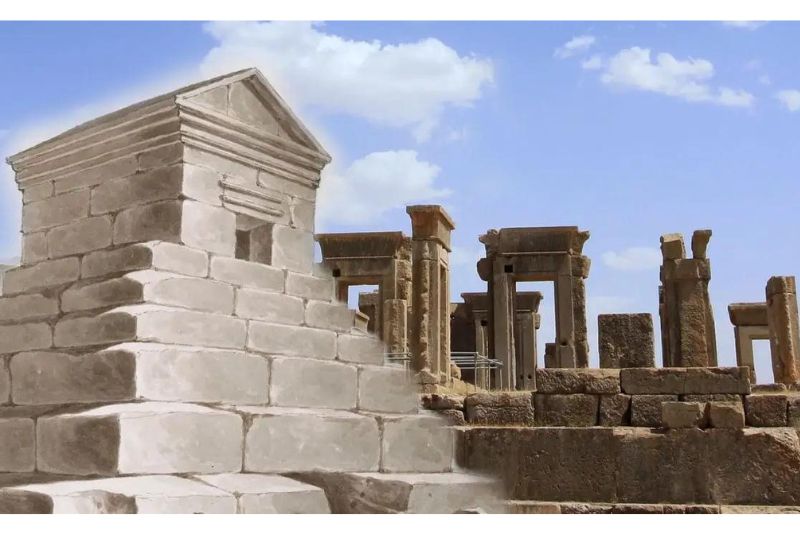
The Achaemenids, led by rulers like Cyrus the Great and Darius I, embarked on ambitious construction endeavors that showcased their advanced understanding of design, construction techniques, and urban planning. One of the most remarkable examples is the city of Persepolis, a grand ceremonial complex where palaces, terraces, and monumental staircases blended harmoniously with the surrounding landscape.
Ancient Persian architecture is a testament to the Persians' remarkable intellect, innovative spirit, and creative prowess. Their ability to conceptualize and construct structures of such grandeur and complexity established a foundation upon which the subsequent eras of Persian architecture would build. This legacy continues to inspire awe and admiration for the remarkable achievements of ancient Persian architects and their enduring impact on architectural history.
| Related: Persian Empire; Facts & History of Achaemenids
Persian Architecture Characteristics
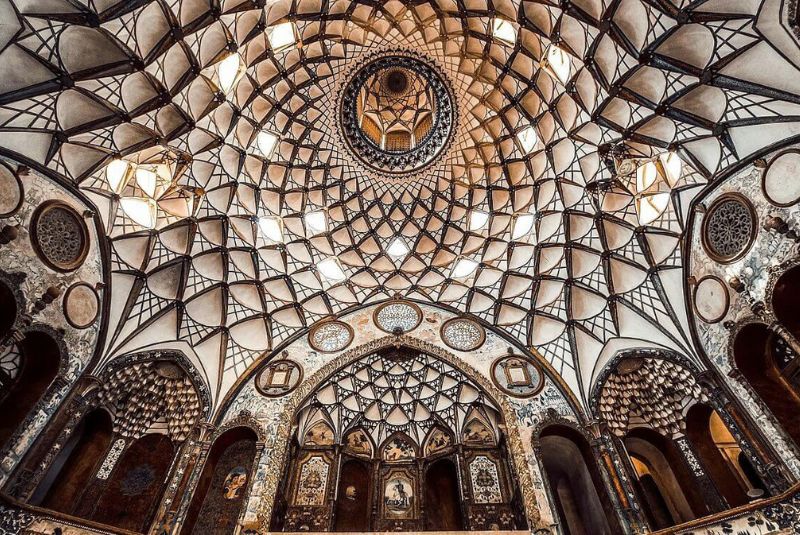
Persian architecture is a captivating fusion of historical richness, artistic intricacy, and cultural depth, giving rise to a range of distinctive characteristics that define its essence.
- Cultural Synthesis: The fusion of diverse cultural influences, reflecting the region's rich history and connections to various civilizations.
- Geometric Precision: A strong emphasis on intricate geometric patterns, reflecting mathematical precision and aesthetic harmony.
- Integration with Nature: Persian architecture seamlessly integrates with its natural surroundings, seen in features like gardens, courtyards, and water elements.
- Symbolism and Spirituality: Architecture is imbued with symbolic elements and spiritual significance, often incorporating calligraphy, patterns, and layouts that invoke deeper meanings.
- Intricate Decoration: Elaborate ornamentation, including tilework, stucco, and muqarnas, adorns surfaces, creating a visually captivating and detailed environment.
- Human Scale: Despite the grandeur, Persian architecture maintains a sense of human scale, ensuring spaces are inviting and accessible, fostering a connection between architecture and people.
- Symmetry and Balance: Creating a sense of visual harmony and order in both interiors and exteriors.
- Functionality and Aesthetics: Persian architecture strikes a balance between practicality and aesthetics, resulting in structures that are not only visually stunning but also functional for their intended purposes.
- Historical Continuity: Carrying elements from ancient civilizations to modern times, showcasing a historical continuum, and preserving cultural heritage.
- Materials and Craftsmanship: The use of high-quality materials like brick, stone, and wood, combined with skilled craftsmanship, contributes to the enduring beauty of Persian architectural wonders.
| Read more: Shahr-e Sukhte | The Beginning of Civilization in 3600 BC
Islamic Architecture or Persian Architecture?
Persian architecture is often referred to as Islamic art because a significant portion of it was employed in the construction of mosques, madrasas, and other religiously significant sites during the Islamic era in Persia. This designation arises from the fact that many of the architectural styles, motifs, and techniques that emerged during this period were intimately tied to the design and adornment of structures of religious importance. The incorporation of elements such as intricate tilework, calligraphy, and geometric patterns, all deeply rooted in Islamic aesthetics, further solidifies the connection between Persian architecture and Islamic principles.
| Also might be interesting: Famous Churches in Iran; From Vank to Saint Thaddeus
Several significant Persian architectural wonders underscore the profound influence of Islam on the region's built heritage. These masterpieces showcase the marriage of Persian architectural ingenuity with Islamic principles, resulting in structures of both aesthetic splendor and spiritual resonance. Some prominent examples include:
- Sheikh Lotfollah Mosque, Isfahan
Renowned for its mesmerizing dome adorned with intricate tilework and muqarnas, this mosque is a testament to the marriage of Persian and Islamic architectural styles. Its harmonious proportions and delicate ornamentation epitomize the synthesis of aesthetics and devotion.
Sheikh Lotfollah Mosque Location
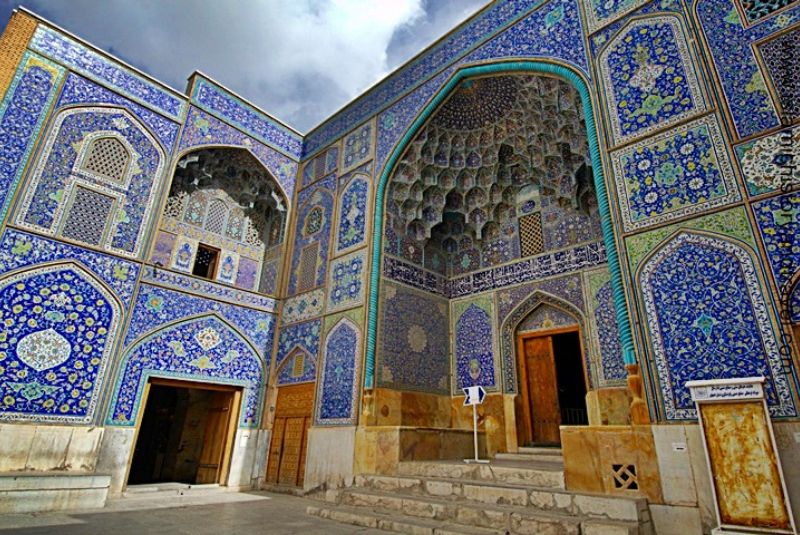
- Nasir al-Mulk Mosque, Shiraz
Often referred to as the "Pink Mosque," this stunning site is celebrated for its kaleidoscope of colorful stained glass windows and tilework. The interplay of light and color creates a transcendent atmosphere, aligning perfectly with Islamic notions of spiritual enlightenment.
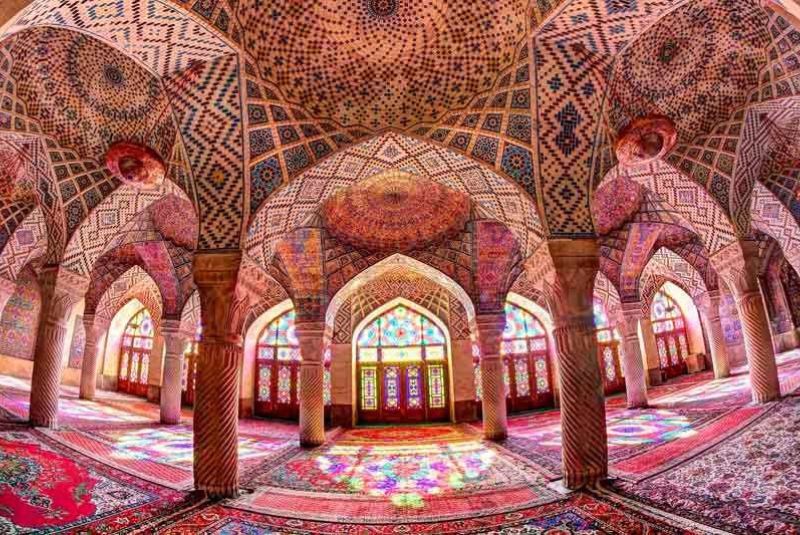
- Shah Mosque, Isfahan
With its grand iwan, majestic dome, and exquisite tilework, this mosque stands as a pinnacle of Persian Islamic architecture. The courtyard's symmetrical layout and the use of calligraphy emphasize both functionality and the beauty of worship.

- Gonbad-e Qabus Tower, Gorgan
This impressive brick tower embodies the Islamic influence in Persian architecture, featuring intricate geometric patterns and Kufic inscriptions. Its austere elegance and precision exemplify the aesthetic sensibilities of the time.
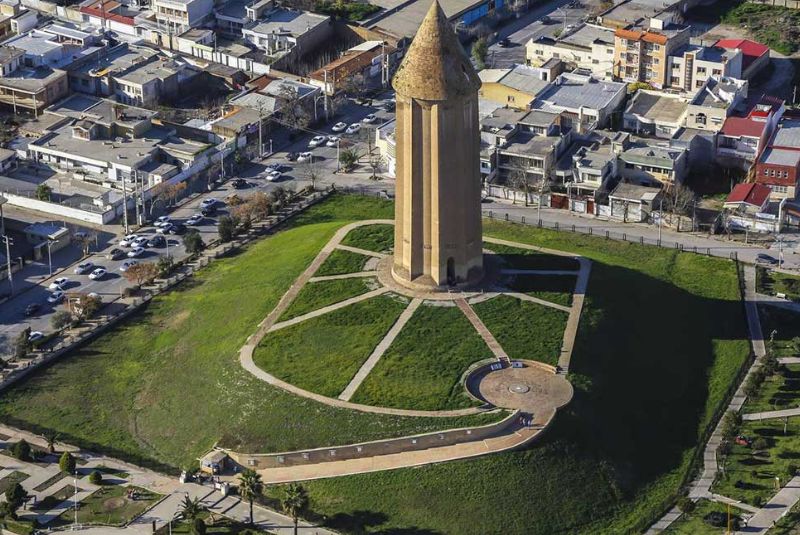
- Vakil Mosque, Shiraz
Notable for its towering entrance portal, this mosque showcases the artistry of Persian architects and craftsmen. The mosaic-tiled mihrab and minbar, combined with the mosque's scale and ornamentation, exemplify Persian-Islamic architectural synergy.

Beyond religious buildings, this UNESCO-listed bazaar exemplifies Persian-Islamic urban architecture. Its intricate layout, vaulted ceilings, and ornate details reflect both practical trade needs and the aesthetic preferences of the time.
Tabriz Historic Bazaar Location
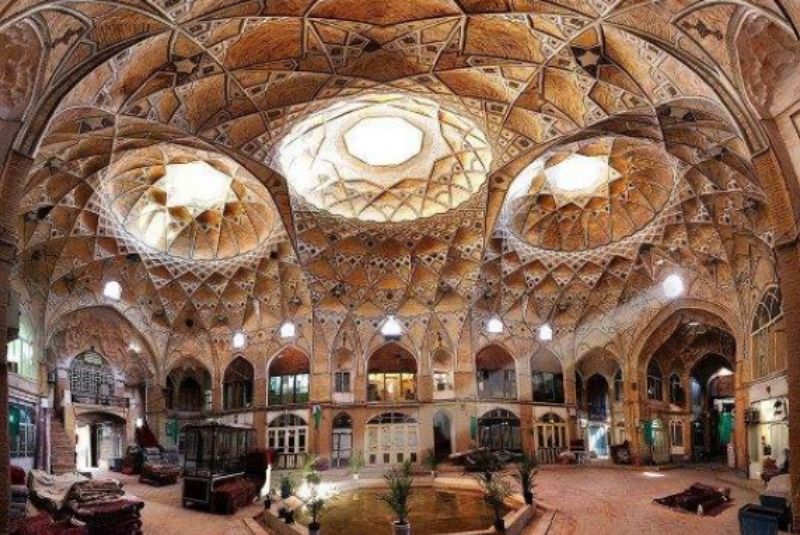
- Chehel Sotoun Palace, Isfahan
Although a palace, this site is reflective of the same architectural principles. Its reflecting pool, grand hall, and pavilions mirror the aesthetics seen in religious architecture, demonstrating how Islamic art permeated diverse structures.
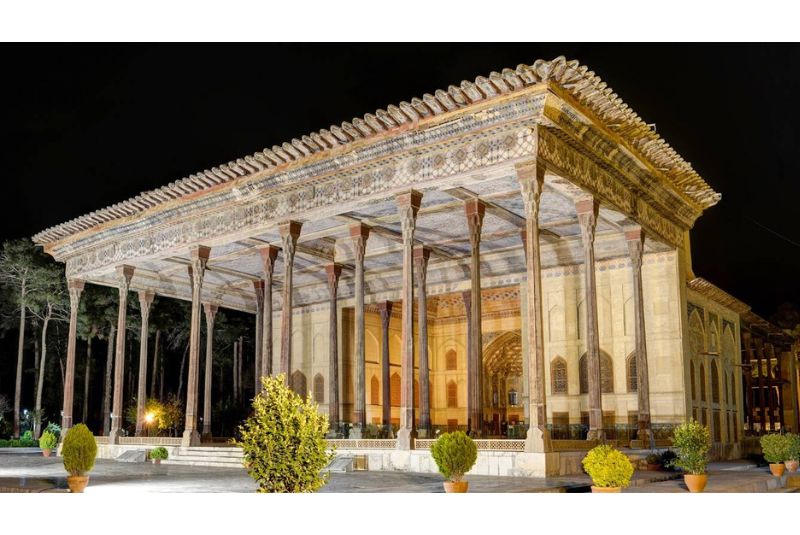
A living testament to the evolution of Persian Islamic architecture, this mosque amalgamates various periods and styles. Its grand courtyard, minarets, and the interplay of geometric patterns exemplify the intertwining of Islamic and Persian design motifs.
Jameh Mosque of Isfahan Location

Elements of Persian Architecture
As we look closely into the architectural tapestry that is uniquely Persian, a panorama of features comes to life, revealing the principles that have shaped both the grandest monuments and the most intimate spaces. These key elements, each distinct in form and purpose, converge to create an architectural legacy that continues to captivate the world.
| Suggestion: Naqsh-e Rustam | Ancient Treasures & Zoroastrian Legacy
The Usage of Iwans

An iwan is a vaulted space that opens on one side to a courtyard. The iwan developed in pre-Islamic Iran where it was used in monumental and imperial architecture. Strongly associated with Persian architecture, the iwan continued to be used in monumental architecture in the Islamic era.
| Find related articles here: Persian Art
Extensive Use of Arches
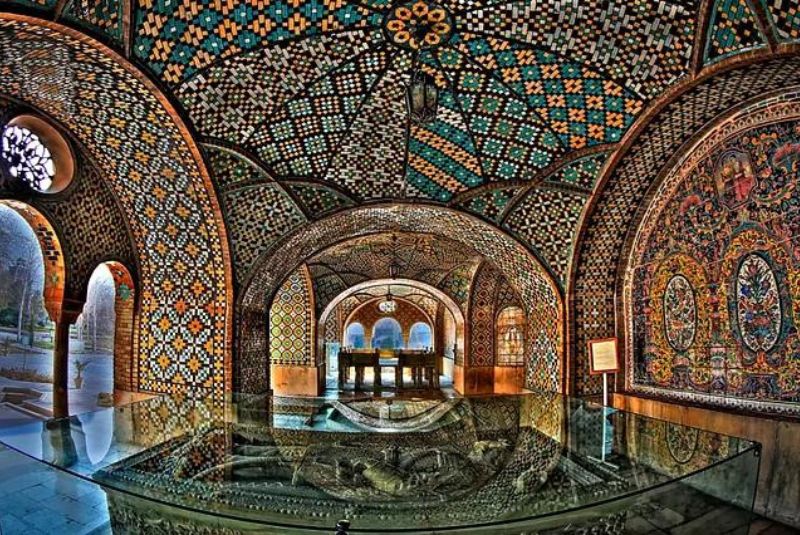
The two famous monuments, The Taj Mahal for Mughal architecture and the Great Mosque of Isfahan for Persian architecture displays an example of this fact. It is built for aesthetic reasons, as well as to place windows and to lessen the extent of sunlight pouring into the building.
Gardens, Fountains, and Pools
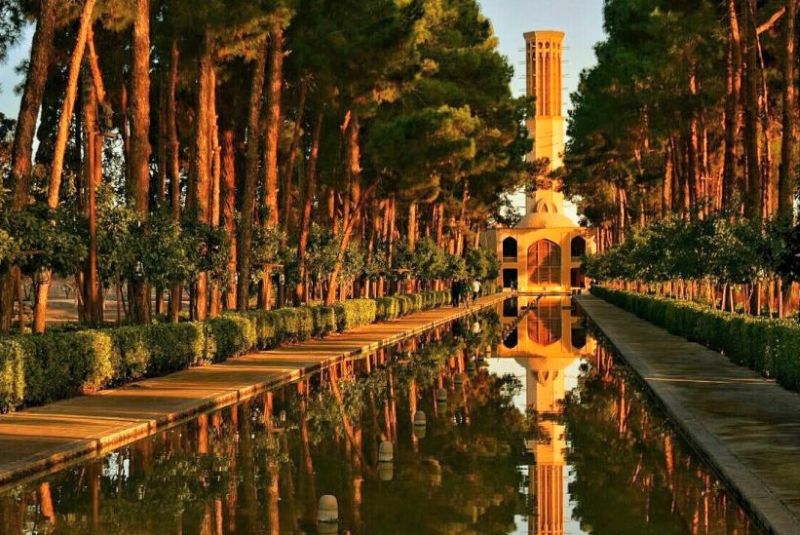
Both architectural styles offer spacious gardens or pools with fountains as features of the buildings. in traditional Iranian architecture or private courtyard, it is used for bathing, aesthetics, or both.
Water plays a particularly central role in Iranian design. 1,000 years before the invention of the first water pump, Persian agricultural experts created the qanat based on their hydraulic laws.
| Suggestion: Susa Persia; One of the Oldest Cities in the World
Domes

The Persian tradition of dome-building dates back to the earliest Mesopotamian architecture (3,000 BC) when domes became an integral part of buildings due to the scarcity of wood in many areas of the Iranian plateau.
In ancient Persian architecture, domes were associated with the divine side of life, as their circular shape represented perfection, eternity, and the heavens.
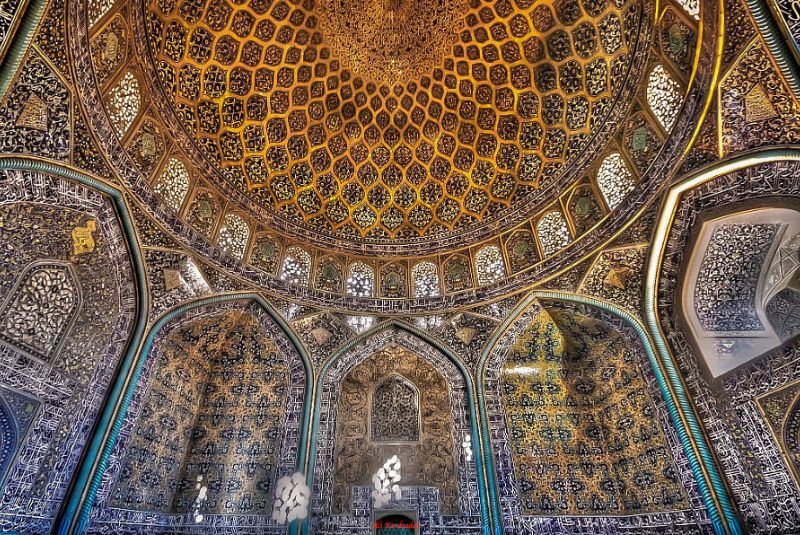
The Persian domes then became the inspiration for the domed baldachin of Roman and Byzantine practice, after Alexander the Great conquered the Achaemenid Empire.
| Discover: Top Most Beautiful and Historical Castles in Iran
Minarets

Emanating from the Seljuk period, minarets such as those of Jameh Mosque in Yazd and Goharshad Mosque, serve as unmistakable markers of Persian mosque architecture. These towering structures are not merely functional; they embody the call to prayer, resonating with faith and community.
Minarets, tall and slender towers adjacent to mosques, exhibit delicate patterns and geometric designs achieved through the use of bricks, tiles, and plaster. Achieving the vertical elegance and balanced detailing of minarets requires the steady hand of a seasoned craftsman.
Tilework and Mosaics

Incorporated since the Achaemenid era, Persian tilework (kashi kari) is an art form renowned in sites like Nasir al-Mulk Mosque and Ali Qapu Palace. This work of art is a symphony of colors and patterns, with each tile carefully cut and glazed before being assembled into mesmerizing geometric, floral, and calligraphic designs. Persian tilework encapsulates the region's synthesis of creativity, faith, and nature, symbolizing both the material and metaphysical worlds.
| Discover: Minakari | The Magnificent Persian Art
Pishtaq

The Pishtaq, epitomized by Isfahan's Sheikh Lotfollah Mosque, is a portal marrying aesthetics and function. Comprising an arched entrance embellished with intricate patterns and calligraphy, the Pishtaq's ornamental grandeur reflects Persian architectural elegance. The tilework delicately frames the portal, while the calligraphy bestows spiritual significance. Beyond its visual appeal, the Pishtaq invites worshippers into spiritual realms while harmonizing the exterior and interior, embodying the transition from the material world to the sacred space within.
| Read more: Top 20 Caravanserai in Iran that will WOW You
Courtyard
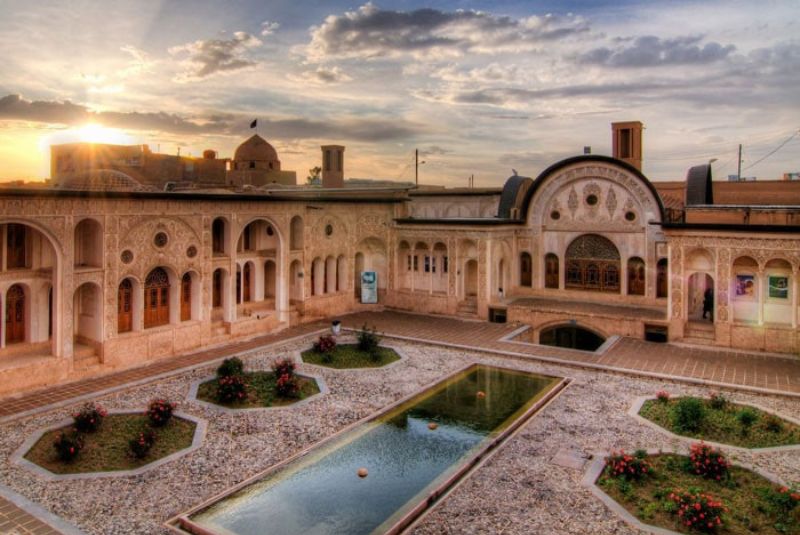
An ornate portal, courtyards feature a central arched entrance embellished with intricate tilework and calligraphy, like those in Chehel Sotoun Palace and Vakil Mosque, hold cultural and climatic significance. Providing light, ventilation, and gathering spaces, courtyards foster community and contemplation. They reflect the Persian concept of harmony between human and natural elements, while their symmetrical layouts mirror the balance sought in both architectural design and life itself.
| Also might be interesting: Iran's Ziggurats
Stucco Decoration
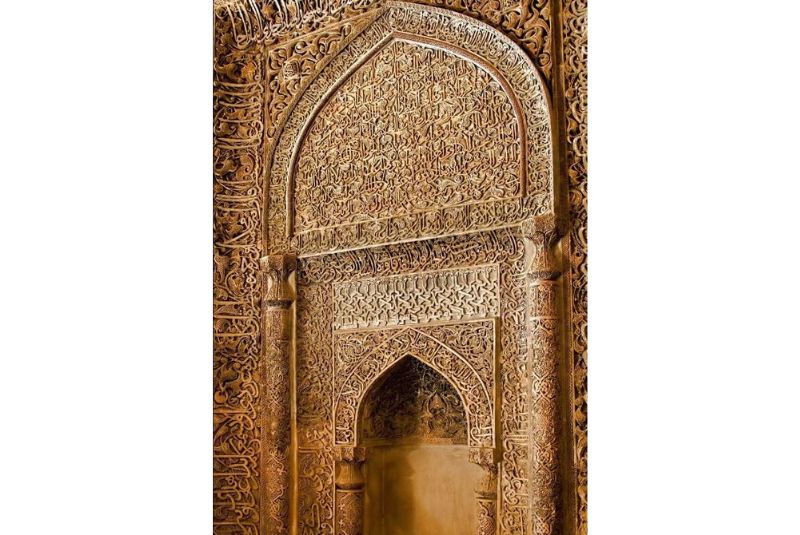
Stucco ornamentation, present in structures like the Jameh Mosque of Isfahan and Gonbad-e Qabus, showcases intricate designs created through molding and sculpting. This art form highlights Persian craftsmanship and artistic expression. With motifs inspired by nature and geometry, stucco enlivens surfaces while underscoring Persian architecture's fusion of intricate detail and architectural structure.
Brickwork

A cornerstone of Persian architecture, demonstrates the practicality and aesthetic finesse of the region's builders. Employed extensively for its availability and durability, bricks were used to construct not only the grandest monuments but also humble dwellings. Persian architects showcased their creative prowess through the intricate arrangements of bricks, forming mesmerizing patterns and decorative motifs. Structures like the mud-brick city of Bam and the Jameh Mosque of Yazd beautifully exhibit the mastery of this construction technique.
| Discover: Bisotun | The Ancient Complex in Western Iran
Wind Towers | Windcatchers
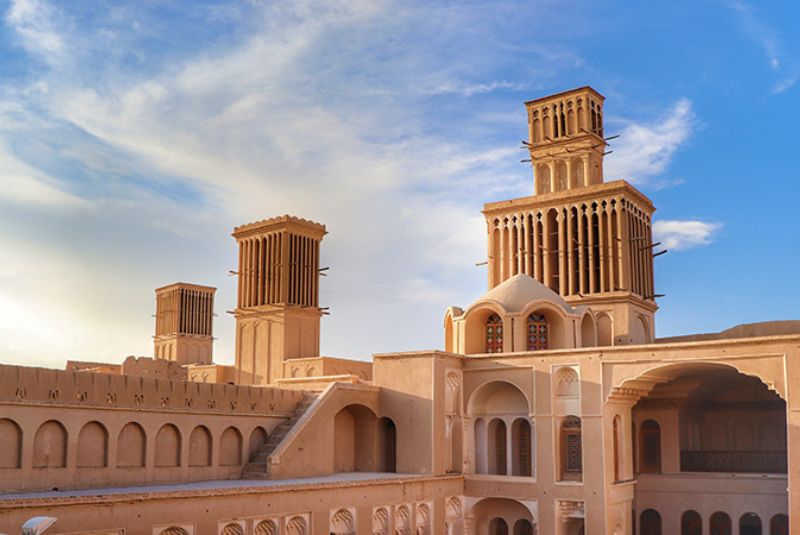
Also known as "Badgir," represent the ingenuity of Persian architecture in response to the region's arid climate. These tower-like structures, often seen in desert cities like Yazd, capture and channel cool breezes into buildings, providing natural ventilation and cooling. Wind towers are both functional and artistic, designed to optimize airflow and create comfortable indoor environments amidst the scorching heat. This architectural innovation exemplifies the Persians' ability to harmonize environmental considerations with structural design, making wind towers an integral part of their architectural heritage from thousands of years ago.
| Suggestion: Arg-e Bam | The Fascinating Citadel of Ancient Persia
Stained glass
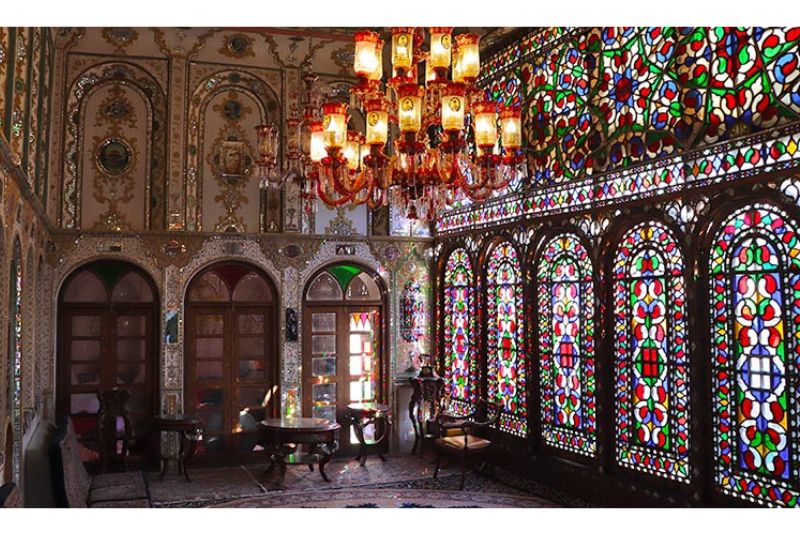
The use of stained glass in Persian architecture is often tied to the same principles that define the integration of other decorative elements: the interplay between light and design, and the aspiration to create spaces that inspire spiritual contemplation and aesthetic admiration. While stained glass might not be as widespread in Persian architecture as other elements like tilework and calligraphy, its presence in select structures underscores the adaptability of Persian design to incorporate a diverse range of artistic techniques.
During the Safavid period, Persian architecture witnessed a cultural revival that included artistic innovations. Stained glass windows adorned some mosques and palaces of this era, contributing to the beauty of these structures. The Nasir al-Mulk Mosque in Shiraz, known for its "Pink Mosque" nickname, is a prime example.
Common Details in All These Styles
Muqarnas
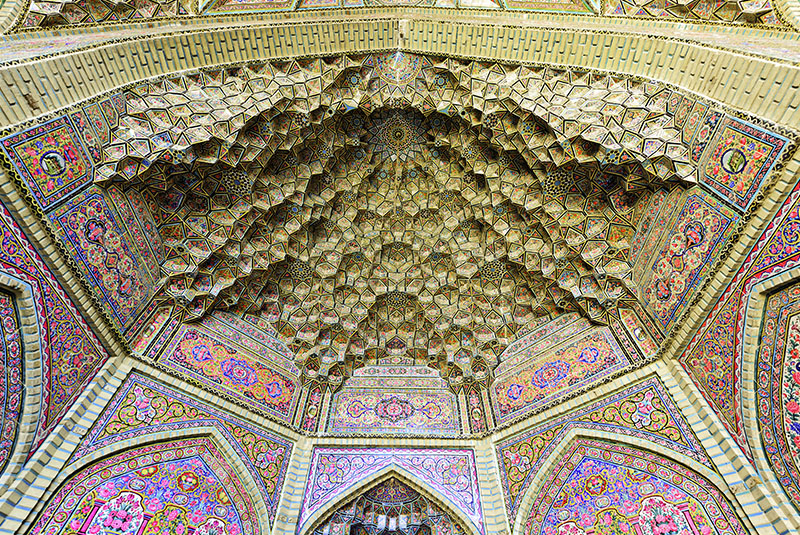
Muqarnas is typically applied to the undersides of domes, pendentives, cornices, squinches, arches, and vaults and is often seen in the mihrab of a mosque. They can be entirely ornamental, or serve as load-bearing structures. The earliest forms of muqarnas domes, found in the Mesopotamian region, were primarily structural.
| Discover: Ghalamzani Art in Iran | Engraving
Calligraphy

Iranians’ passion for using the script as an artistic impression goes back to pre-Islamic times but it is the work of Islamic era calligraphers and illuminators that elevated its use into the high art we appreciate today.
Encouraged by the Islamic preference for the art of calligraphy over representational arts, it developed from epoch to epoch and from style to style.
| Suggestion: Persian Hammams | Traditional Persian Bathhouses
Mashrabiya

Mashrabiyas were mostly used in houses and palaces although sometimes in public buildings such as hospitals, inns, schools, and government buildings. They tend to be associated with houses of the urban elite classes. They are very prevalent in Iraq, Iran, the Levant, Hejaz, and Egypt.
| Read more: Traditional and Folklore Music of Iran
Symmetry

Iranian architecture makes use of abundant symbolic geometry, using pure forms such as the circle and square, and plans are based on often symmetrical layouts featuring rectangular courtyards and halls.
Sassanid architecture is decorated with carved stone or stucco reliefs and makes use of colorful stone mosaics. Beautiful gold and silver dishes, bowls, and ewers, often decorated with hunting scenes or animals in high relief, and textiles with symmetrical heraldic designs also remain.
Share your story!
Comment below and let us know about your Experience.
Your story inspires others!


Comment
Leave a Comment